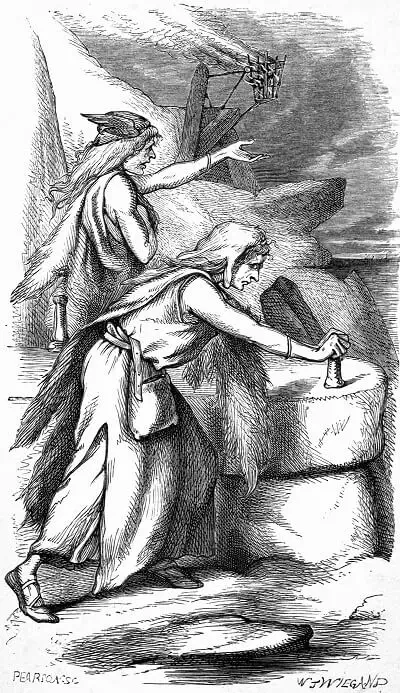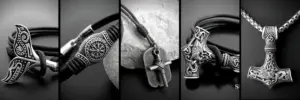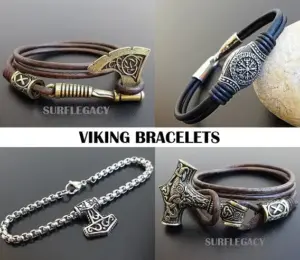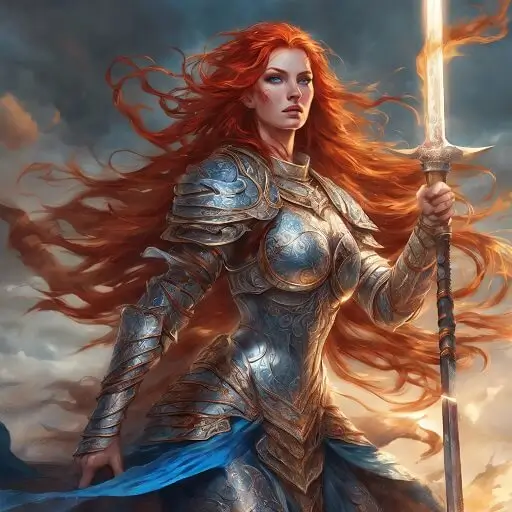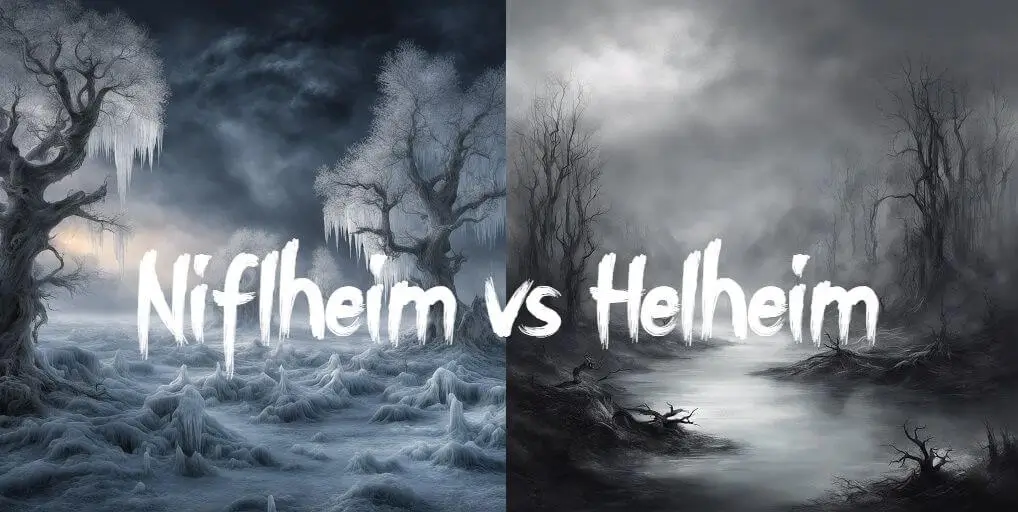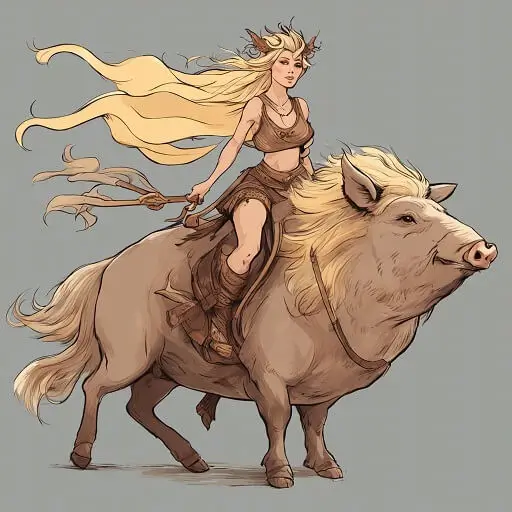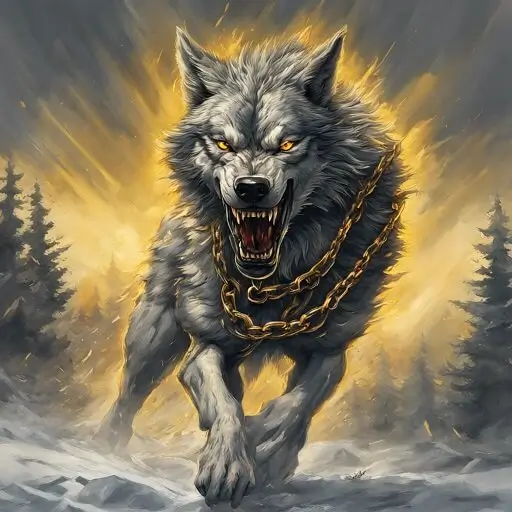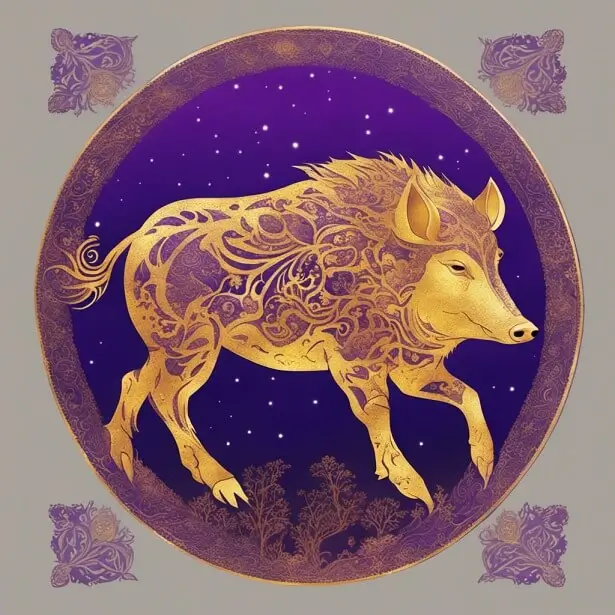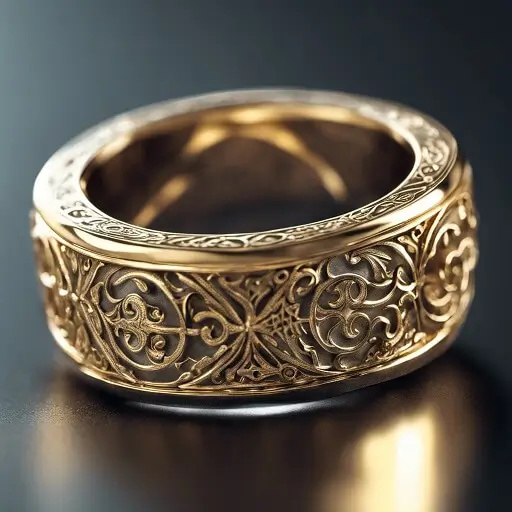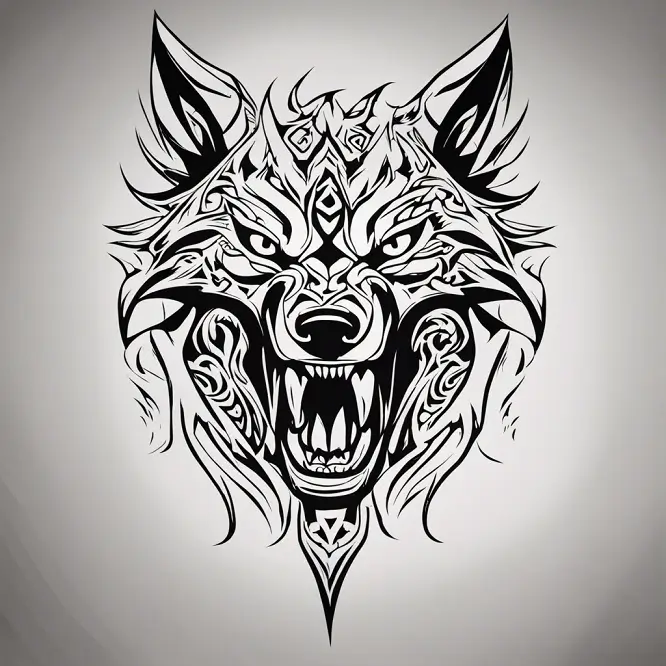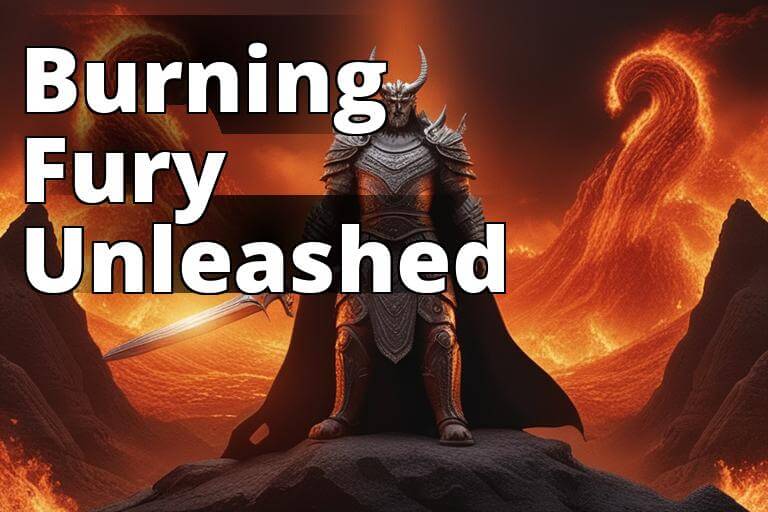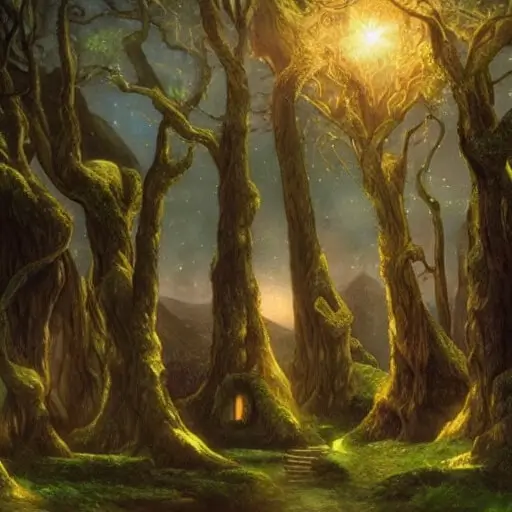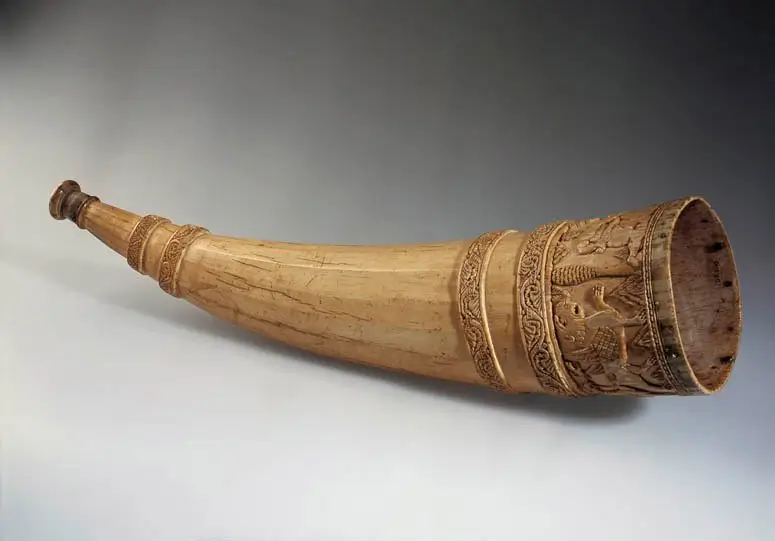In Norse mythology, few artifacts stand out like the wondrous Grótti, a magical millstone imbued with extraordinary abilities. This legendary object plays a prominent role across Eddic poems, Norse folk tales, and continues to capture imaginations today.
Key Takeaways
- Grótti is a mythical Norse millstone with magical abilities to produce unlimited bounty.
- It originated from the Mead of Poetry, which gave Norse gods their divine creative powers.
- Grótti appears across many Eddic poems and Norse tales as a symbolic icon of abundance and transformation.
- Its enormous size and power could only be wielded by giantesses or superhumans in legends.
- In Norse culture, Grótti represents the quest to access supernatural forces beyond mortal limits.
- Today, Grótti continues inspiring modern pop culture and academic works about Nordic societies.
Overview of Grótti
Grótti is a mythical millstone in Norse lore that possesses supernatural qualities allowing it to produce invaluable resources endlessly. Also referred to as “Grotti” or the “Mill’s Song,” tales of this mystical grinding stone have survived over centuries through ancient poetry, oral traditions, and Norse literature.
Grótti has left an indelible imprint on Scandinavia’s cultural legacy. Beyond its practical applications, the magical millstone symbolizes deeper concepts like abundance, transformation, and the potential to channel divine powers. As old legends get reinterpreted in modern times, Grótti persists as an eternal icon of Norse mysticism.
Origins in the Mead of Poetry
There are varying accounts regarding Grótti’s origins. A common story traces the mystical millstone back to the myths surrounding the Mead of Poetry.
As the tale goes, the giant Suttung once possessed the Mead of Poetry, source of all creative and intellectual powers, which he had stolen from the Norse gods. Desperate to retrieve this magical mead, Odin hatched a cunning plot to regain it from Suttung’s stronghold.
Through deception and shapeshifting magic, Odin managed to drink the coveted mead over three nights. As the irate Suttung pursued Odin disguised as an eagle, the gods prepared a trap – they laid out alluring vessels containing some of the Mead on the ground below.
Seeing the vessels, Odin accidentally dove right into one called Óðrœrir as he flew by. It was out of this container with the Mead’s remnants, that the magical properties of the legendary Grótti millstone spawned soon after.
So in essence, Grótti originated from the same mystical Mead of Poetry that gave the Norse gods their divine creative energies and powers. This imbued the grinding stone with exceptional qualities transcending the mortal realm.
Abilities to Produce Unlimited Bounty
Once spawned, Grótti gained repute across Norse realms for its wondrous capabilities. The mythical millstone could produce unlimited wealth and resources for any owner wise enough to harness its magic.
Specifically, Grótti possessed the power to generate precious metals like gold, essential crops, rare delicacies, and basically endless bounty upon command. During eras of deprivation, famine or scarcity, Grótti guaranteed abundance and prosperity regardless of circumstances.
The only requirements were for someone to manually turn the stone’s spinning mechanism while vocally specifying what they wanted manifested. Grótti would then grind out the requested substance endlessly.
However, Grótti was of such enormous proportions and weight that no ordinary human or being could physically move it. Only superhuman entities like giants, gods or cursed creatures had the strength to activate Grótti’s magic. Once set in motion, though, Grótti’s crushing power was virtually unstoppable by any external force.
Role in Norse Folk Legends and Literature
Aside from its mystical origins and powers, Grótti also features prominently across various Norse poetic and literary works through the ages.
For instance, later recordings of the Poetic Edda feature the iconic poem Gróttasöngr where Grótti itself plays a central role. The poem depicts the millstone being manned by Fenja and Menja, two giant slave girls kidnapped by the Danish king Fróði.
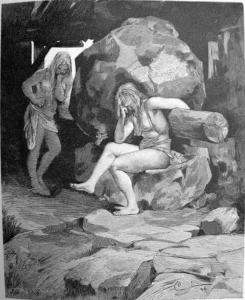
Fenja and Menja at the mill by Carl Larsson and Gunnar Forssell
He forces them to endlessly grind fortune and prosperity for his kingdom on the magical Grótti artifact without rest. Fed up with the exploitation, the giant women ultimately use the millstone’s power against Fróði by invoking an invading army that destroys his realm.
In Snorri Sturluson’s Prose Edda, there is also an elaborate background story for Grótti along with examples of its tremendous grinding power. One particular episode describes the capture of slaves Fenja and Menja who are compelled to operate the unstoppable millstone by tyrannical kings Fróði and Mysing.
Both these kings meet violent ends as the increasingly enraged giant women rebel against their bondage by wrecking the cursed millstone artifact with their bare hands. The broken apparatus even creates a giant whirlpool where it sinks!
Beyond ancient myths, Grótti has popped up frequently across medieval Scandinavian ballads, modern fantasy, and Norse cultural tributes. Its popularity endures through the ages thanks to Grótti’s aura of mystery and intrigue.
Key phases in Grótti’s mythological journey
| Phase | Description |
|---|---|
| Origins | Spawns from the Mead of Poetry stolen back by Odin |
| Discovery | Unearthed in Norse realms but no one can wield it |
| Acquisition | King Fródi acquires Grótti after purchasing giant slaves Fenja and Menja |
| Operation | Slaves forced to continuously grind fortunes from the millstone |
| Rebellion | Exhausted giant women invoke armies through Grótti to attack Fródi |
| Retribution | Subsequent owner Mysing drowns trying to overutilize Grótti, creating disastrous maelstrom |
| Legacy | Ruined millstone disappears while its legends populate Norse mythos |
Symbolic Representations
Like most mythological symbols, Grótti carries deeper connotations going beyond just its physical millstone form and magical properties. The grinding stone broadly represents the transformative cycle between raw potential and refined fruition.
Specifically, Grótti’s act of spinning wheat into flour for bread serves as a microcosm for potential achieving full manifestation. The interactive process requires both human input (for turning the wheels) and metaphysical blessing (the mead-spawned magic) thereby denoting harmony between physical and mystical realms.
Additionally, Grótti’s unlimited resource generation symbolizes nature’s abundance, fertility and the principle of sowing and reaping. Its power revolves around reciprocity where user intentions and actions determine the resultant bounty. This reflects how farmers must diligently tend their land to bear harvest.
Esoterically, Grótti also denotes the quest to channel divine forces beyond mortal means. Its link with the Norse gods via the Mead of Poetry imbue the artifact with symbolic potential to bridge humanity with the supernatural. The millstone thus represents mortal means of tapping into the divine.
Grótti in Contemporary Contexts
The iconic Grótti continues to receive modern homages across video games, music and other pop culture mediums. Fans recreate the ambiance of Norse magical lore through such contemporary tributes.
For instance, the popular God of War game franchise incorporates Grótti as a central trope in its Norse mythology-themed edition. The 2018 release portrays the immensely heavy millstone as a coveted magical artifact that the protagonists seek to utilize against cosmic enemies.
Some musical groups like the French band Skáld also pay direct tribute to Grótti, using lyrics and themes inspired by the ancient eddic poem Gróttasöngr. Their songs evoke imagery of the cursed millstone’s grinding might and brooding mysticism.
Even scholarly analyses nowadays highlight Grótti’s cultural symbolism in contextualizing past Nordic societal aspects like livelihood struggles and gender roles. The enduring relic thus keeps spurring artistic creativity and academic examination alike.
The Enduring Allure of Grótti
As the above overview shows, Grótti occupies a uniquely special spot within the grand mythoscapes of Norse legend. The wondrous grinding stone has captured imaginations for centuries through its otherworldly origins, reality-bending powers, and symbolic values reflecting Nordic cultural beliefs.
From its roots in the Mead of Poetry to eventual fragmentation by exiled giants, Grótti undergoes great adventures while catalyzing fortune and calamity for successive wielders drunk on its power. Like all symbols, the legendary millstone means things both within and beyond its physical form.
Ultimately, Grótti endures as a larger-than-life icon representing the Nordic mind’s quest for magic and meaning in the mundane. Something as humble as a millstone obtained extraordinary dimensions in Norse mental spaces – where the functional flowed seamlessly into the fantastic and life was but poetry in motion!
So as new generations continue discovering old folklores, they inevitably get drawn to the wondrous lure of dense artifacts like the Grótti millstone. One cannot help but ponder wistfully about all the lost histories and little stories contained within…like how something now reduced to silent stone, once spun to build empires and shake realms!
Conclusion
As the mystical anchor for myriad Norse tales across generations, the legendary Grótti stands out for its unique blending of supernatural qualities with symbolic values growing ever more relevant. The wondrous grinding stone shall likely continue featuring in fantasy narratives and scholarly works seeking to illuminate Scandinavia’s rich cultural heritage. Indeed, this mythic relic proves boundless in sparking human imagination just as it manifested boundless bounty in ancient lore!
Grótti – FAQs
What did Grótti actually look like?
As an mythical artifact, Grótti’s exact physical appearance remains a mystery with no definitive textual or visual descriptions available. Some artistic liberty is taken across different contemporary depictions showing it as a basic millstone form.
Were Grótti’s powers real or fictional legends?
Most historians view Grótti as a purely fictional concept arising from ancient Norse storytelling traditions about supernatural forces and beings. Of course, the possibility that fables were inspired from witnessed phenomena can never be completely excluded.
Why does interest around Grótti persist through the ages?
The mystical grinding stone likely endures as a cultural icon because of innate human tendencies to fantasize about wish-fulfilling magical sources that transcend daily struggles and limitations. The appeal of escaping mundanity through fantastical narratives persists across generations.
Did Grótti serve any ritualistic functions in ancient Norse society?
Very little evidence suggests any ritualistic roles for Grótti among historical Norse communities. Most scholars today approach it as a purely mythological trope rather than an actually worshipped religious icon. But new archaeological finds may potentially reveal more.
What eventually happens to Grótti according to Norse myths?
The mythical millstone ultimately gets destroyed by rebellious giant slave women who had grown sick of being exploited to keep operating Grótti against their will. Sinking the cursed artifact then purportedly gave rise to an enormous ocean maelstrom.
Shop Viking Jewelry
Are passionate about Vikings or Norse Mythology?
Finding the ideal piece of Viking Jewelry can be challenging and time-consuming, especially if you lack inspiration or don’t know where to look.
Surflegacy, has you covered. We have a wide range of Handmade Jewelry in various styles, shapes, colors, and materials, to accentuate your Viking spirit and look. Do not hesitate to visit our selection HERE

